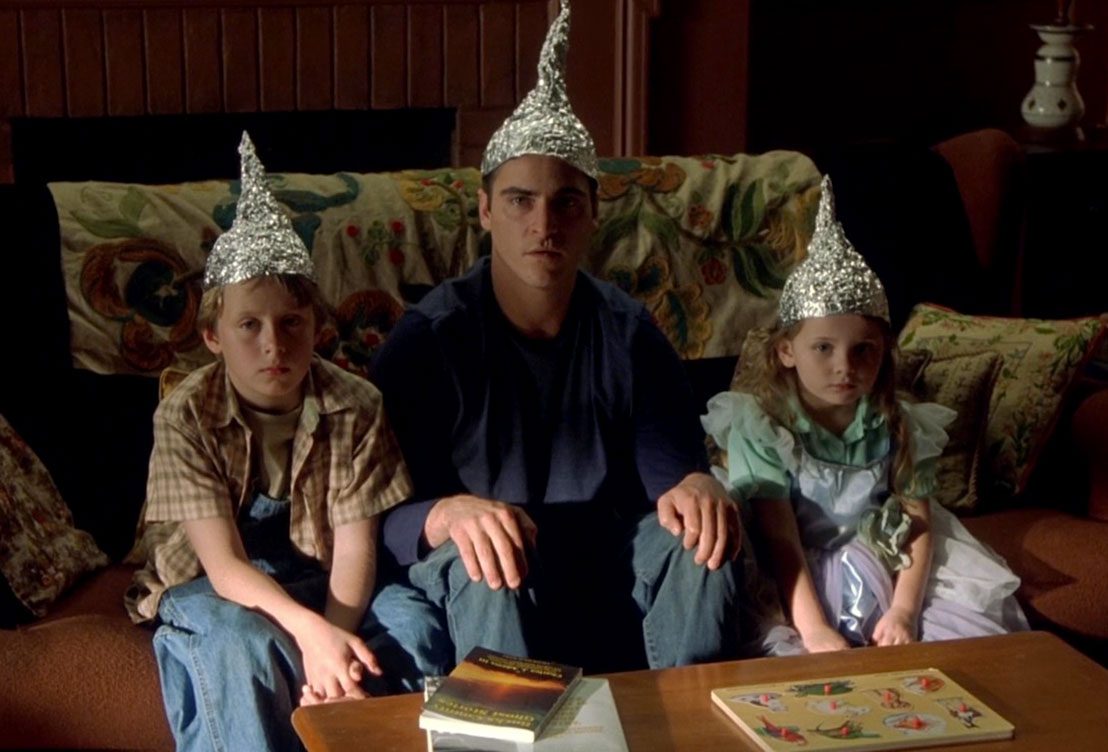
Absolute Absurdity
The word “conspiracy” has a few meanings depending on how it’s used; likewise, it also has a few different connotations. It can be a verb used to describe joining a secret agreement to act in a hurtful or unlawful manner. It can also be used to describe a secret arrangement or plot. Both aforementioned definitions can generally be ascribed connotations of treachery, or mystery. Its final use is as a conspiracy theory, which is defined as the rejection of standard explanations in place of a belief that it was instead the result of a covert plot. As a study titled, “Stigmatized beliefs: Conspiracy theories, anticipated negative evaluation of the self, and fear of social exclusion” found, a social stigma is generally attached to conspiracy theories. While the use of the term conspiracy can be traced back to the earliest centuries of recorded history, it seems that even today the discourse surrounding conspiracies sees no end; ranging from the most skeptical minds to the most suspecting.
The All-Knowing-Knower of Nothing
In efforts to explain why some minds seem to reject the standard story, researchers have conducted various studies to explain what type of behavior, and what type of personalities tends to believe in conspiracy theories. One such journal by Hart and Graether, in 2018 finds that not only does it take a certain type of person to believe in conspiracy theories, the “distinct cognitive tendencies” displayed by such individuals can be used to predict whether or not they are likely to believe in such things. The research found that the most reliable indicator of a conspiracy believer was what they refer to as a constellation of traits known as “schizotypy”; which in short, is a theoretical concept in psychology referring to personality characteristics varying from normal dissociative, imaginative states and ranging all the way to extreme states of mind related to psychosis. These individuals, according to their research, differ in their pattern recognition tendencies in that they generally seek meaning or motive where there is none. While their research may look like more of an insult than anything, Hart adds that their research is intent to further the understanding of why some people are more attracted to conspiracies than others, and does not address strictly whether or not they are true.
Of course, the discourse surrounding conspiracies is not about whether or not they are true, rather it is about how often are they true. However the inherent flaw of conspiracy theories is akin to the fact that anyone can write a book, or draw a picture. In his essay Knitting Socks for the Beast: On Conspiracy, Jonathan Lethem compares conspiracies to a knitted sweater. The sweater relies on our hands and minds to create it. It is not real if not for our belief in them. And like a sweater, they begin to unravel. Beyond the outright limitless theories that “beg to be denied”, Lethem in the end concedes that society needs the paranoiacs and detectives in a balanced proportion, for without them society could be left in the dark.
A Two-Way Street
Not to say that there perhaps isn’t also an inherent flaw in the way conspiracies are viewed. That is, to say that to label anything a conspiracy is to discredit it, says David Coady who cites Sir Karl Popper as the man who gave conspiracy theories a bad rap. So bad is the view in fact, that Coady compares it to the label of heretics in the middle ages. This has the effect of discrediting an assertion merely because it implies conspiring particularly by an institution or of those in power. After all, a conspiracy theory is just that, a theory. This automatic assumption of falsehood given to conspiracies, Coady says, is just as much of a fallacy as those who irrationally dismiss them. In spite of the universal harm Coady says mainstream science positively imposes who generally concludes about conspiracy theorists in the words of a philosopher, “there is something wrong with how he thinks” (Cassam, 2015), people do conspire; they lie, and plot, some of us more than others.
A Silver Lining
After all some conspiracies turn out to be true: big tobacco knew cigarettes caused cancer for years, the government did poison alcohol during the prohibition, the CIA did get involved in a spot of drug trafficking, the CIA also did kidnap and conducted mind control experiments on people, the government was about to carry out terrorist attacks on its own people to justify war (only to be stopped by JFK himself), Watergate did happen, the government does spy on you.
So, when are they true? When are the biggest names in conspiracies actually right? Arguably the biggest name today, Alex Jones, has been the center of many controversial discourse over the years. To many, to describe anything Alex says as crazy is an absolute understatement. However some decide to look past the sort of superficial image that Alex has and instead look objectively at the things he says. Recently, Joe Rogan was one of these people. In his podcast, episode 1255 he had Alex on his show for the second time. In the podcast, which was so dense that Joe had to break out his “100% tobacco” to continue, Alex discusses everything from human-pig hybrids to interdimensional beings. Joe takes a stance that most would find reasonable, he surmises that Alex may use hyperbole but does not outright lie or say things that are unable to be fact checked. Of course, not everything Alex put on the table can be fact checked, but what can?
For starters, animal-human hybrids have been found to be completely viable and significant progress has been made. Possibly not in “man-bear-pig” sort of way (at least not yet) Alex insinuates in the podcast, scientists have however absolutely accomplished the feat of introducing human cells into non-human embryos. These have all sorts of promise for the prolonging and repair of human bodies.
As for inter-dimensional beings, of course there is no proof that they are real. However, psychedelic users (more than LSD/acid) have long reported complex hallucinations along with reporting receiving information. Of course, they have also reported sentient beings that appear to even interact with the user. This is all based on the theory that certain psychedelics allow the user to open their eyes to an alternate universe. While the closest thing we have to evidence that government agents have used psychedelics to contact inter-dimensional beings is the CIA research project MK ULTRA, there has been research conducted with the goal of prolonging certain psychedelic experiences.
Continuing on the topic of MK ULTRA, the CIA’s at times illegal experiments into mind-control, there have been numerous testimonials of MK-ULTRA survivors discussing child kidnappings and organ trafficking, abuse, satanic ritualism, and here’s a kicker: child sacrifice running rampant in the military. Also terrifying is the recent research into 5G technology and its potential (and therefore potential to be weaponized) to affect the mind.
Perhaps most seemingly fictional is Alex’s constant references and claims regarding ESP and parapsychology. Which surprisingly has been the topic of interest to more than just paranoiacs and tarot card readers. One such institute was actually the CIA-sponsored Stanford research institute who speak of reported successful experiments in ESP, specifically in remote viewing.
Furthermore, it was no secret, at least to the CIA that the USSR also looked heavily into the subject. Who along with the CIA speak of reportedly successful experiments in (get this), psychokinesis. In one experiment, a woman was able to completely separate an isolated yolk from an egg.
Conclusions
Perhaps conspiracies get a little worse of a rap than it deserves, or maybe the topic deserves just as much skepticism as it gets today. Perhaps the truth is like the saying goes, lying somewhere in the middle. Maybe those who entertain them get a little more flak than they deserve; people like, dare I say, Alex Jones might get worse of a name than he deserves. Of course we must entertain the idea completely opposite of the skeptic. Maybe it is what the superhero and villain in all of us would hope, as J. B. S. Haldane puts it, “The universe is not only stranger than we imagine, it is stranger than we can imagine”.
Works Cited:
Blakemore, Erin. “Human-Pig Hybrid Created in the Lab-Here Are the Facts.” National Geographic, National Geographic Society, 26 Jan. 2017, news.nationalgeographic.com/2017/01/human-pig-hybrid-embryo-chimera-organs-health-science/.
Cassam, Quassim. “The Intellectual Character of Conspiracy Theorists – Quassim Cassam | Aeon Essays.” Aeon, Aeon, 17 Apr. 2019, aeon.co/essays/the-intellectual-character-of-conspiracy-theorists.
Coady, David. “In Defence of Conspiracy Theories (and Why the Term Is a Misnomer).” The Conversation, 8 Nov. 2018, theconversation.com/in-defence-of-conspiracy-theories-and-why-the-term-is-a-misnomer-101678.
“Commission Dossier.” Committee to Support the ITNJ, itnjcommittee.org/why-the-itnj/commission-dossier/.
Fields, R. Douglas. “Mind Control by Cell Phone.” Scientific American, 7 May 2008, http://www.scientificamerican.com/article/mind-control-by-cell/.
Gallimore, Andrew R., and Rick J. Strassman. “A Model for the Application of Target-Controlled Intravenous Infusion for a Prolonged Immersive DMT Psychedelic Experience.” Frontiers, Frontiers, 30 June 2016, http://www.frontiersin.org/articles/10.3389/fphar.2016.00211/full.
Hart, Joshua, and Molly Graether. “Who Believes in Conspiracies? New Research Offers a Theory.” ScienceDaily, ScienceDaily, 25 Sept. 2018, http://www.sciencedaily.com/releases/2018/09/180925075108.htm.
LaMothie, John D. “CONTROLLED OFFENSIVE BEHAVIOR.” Cia.gov, http://www.cia.gov/library/readingroom/docs/CIA-RDP96-00787R000100120001-9.pdf.
Lantian, Anthony, et al. “Stigmatized Beliefs: Conspiracy Theories, Anticipated Negative Evaluation of the Self, and Fear of Social Exclusion.” European Journal of Social Psychology, John Wiley & Sons, Ltd, 5 June 2018, onlinelibrary.wiley.com/doi/10.1002/ejsp.2498.
Lethem, Jonathan. “Knitting Socks for the Beast: On Conspiracy.” The Paris Review, 5 Nov. 2018, http://www.theparisreview.org/blog/2018/11/05/knitting-socks-for-the-beast-on-conspiracy/.
“NEWS REPORT ON RESEARCH PERFORMED BY STANFORD RESEARCH INSTITUTE ON ABILITY TO VIEW LOCATIONS REMOTELY.” Cia.gov, http://www.cia.gov/library/readingroom/docs/CIA-RDP96-00787R000200080011-2.pdf.
Rogan, Joe, and Alex Jones. “Joe Rogan Experience #1255 – Alex Jones Returns!” YouTube, YouTube, 27 Feb. 2019, http://www.youtube.com/watch?v=-5yh2HcIlkU.
